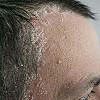Anaphylaxis
- Reviewed by Howard E. LeWine, MD, Chief Medical Editor, Harvard Health Publishing; Editorial Advisory Board Member, Harvard Health Publishing
What is anaphylaxis?
Anaphylaxis is a severe, sometimes life-threatening, allergic reaction that occurs within minutes to several hours of exposure an allergy-causing substance (allergen). Anaphylaxis also is called anaphylactic shock.
In an allergic reaction, the body's immune system responds to the presence of an allergen by releasing histamine and other body chemicals. These chemicals cause the symptoms of allergies, which are usually mild but annoying, such as the runny nose of hay fever (allergic rhinitis) or the itchy rash of poison ivy. However, in some cases, the symptoms can be much worse and involve the entire body. Anaphylaxis is the most severe allergic reaction. In anaphylaxis, these immune chemicals cause serious skin symptoms, such as hives and swelling, as well as severe breathing problems, such as swelling in the throat, narrowing of the lower airways and wheezing. The chemicals also cause blood vessels to widen dramatically, which leads to a rapid, severe drop in blood pressure (shock). Anaphylaxis is a life-threatening medical emergency.
Although the specific allergen that triggers anaphylaxis may be different for each patient, it often can be traced to one of the following sources:
- Foods — especially eggs, seafood, tree nuts, grains, milk and peanuts
- Drugs — especially an antibiotic from the penicillin or cephalosporin group, a "sulfa" antibiotic, or ibuprofen and other non-steroidal anti-inflammatory pain medicines (NSAIDs)
- Insect stings — from bees, yellow jackets, paper wasps, hornets or fire ants
- Injected anesthetics — procaine, lidocaine
- Dyes — used in diagnostic X-rays and scans
- Industrial chemicals — latex and rubber products used by health care workers
- Allergy shots (immunotherapy).
Symptoms of anaphylaxis
Symptoms of anaphylaxis usually occur within seconds to minutes of exposure to the allergen, but symptoms can be delayed for several hours. For some people, symptoms do not always show up after an exposure, but are triggered if an exposure is followed by vigorous exercise. Symptoms range from mild to very severe. These symptoms can include:
- rapid pulse, sweating, dizziness, fainting, unconsciousness
- wheezing, chest tightness, difficulty breathing, coughing
- itchy hives, which may blend together to form larger areas of skin swelling
- swelling of the lips, tongue or eyes
- nausea, vomiting, abdominal cramps, diarrhea
- paleness, bluish skin color
- throat swelling, with a feeling of throat tightness, a lump in the throat, hoarseness or obstructed air flow.
Diagnosing anaphylaxis
The doctor will ask about the patient's allergy history and about his or her exposure to any of the common allergens that trigger anaphylaxis. It is very important for the doctor to know if the patient's symptoms started soon after exposure to an allergen, for instance after eating nuts, after a bee sting or after taking an antibiotic. Because the patient may be too sick to provide this information, a family member, friend, co-worker or school nurse will need to help. People with a history of severe allergic reactions should consider wearing a medical alert identification necklace or bracelet to save valuable time in identifying the problem.
The doctor usually can diagnose anaphylaxis based on the patient's history and the results of a physical examination.
Expected duration of anaphylaxis
With early and appropriate treatment, cases of anaphylaxis can improve quickly within a few hours. If a person has already developed the more serious symptoms and dangerous conditions, it may take a few days to fully recover after treatment. If untreated, anaphylaxis can cause death within minutes to hours.
Preventing anaphylaxis
You can prevent anaphylaxis by avoiding the allergens that trigger your symptoms. For example, people with food allergies should always check the list of ingredients on food labels, and they should always ask the waiter or waitress to check with the chef about food ingredients before eating at a restaurant. If you are allergic to bee stings, you should limit gardening and lawn mowing, and you should not wear perfumes, hair sprays or bright clothing that attracts insects.
People with a history of anaphylaxis should wear a medical identification bracelet or necklace to alert others in the event of another reaction. In addition, ask your doctor if you should carry a pre-loaded syringe of epinephrine (adrenaline), a medicine used to treat anaphylaxis. At the first sign of symptoms, you or a helper (family member, co-worker, school nurse) would inject the pre-loaded epinephrine to treat your allergic reaction until you reach medical attention.
Allergy shots, also called immunotherapy, are used to gradually change the type of reaction that a person has after an insect sting. Allergy shots cause the immune system to react by producing varieties of antibodies and cells that do not cause dangerous symptoms, instead of producing antibodies and chemicals that result in allergy symptoms. On rare occasions, allergy shots also can be used to prevent certain medication allergies. Allergy shots are not used to treat food allergies, because the shots themselves are too likely to cause anaphylaxis. However, oral (swallowed) immunotherapy using extraordinarily diluted samples of peanut is a newer treatment for peanut allergy.
Treating anaphylaxis
Symptoms of anaphylaxis usually require treatment with epinephrine, by injection. People who have had anaphylaxis can carry a pre-loaded syringe containing epinephrine. This is the most important treatment for anaphylaxis symptoms, because it can help to prevent a blocked airway from throat swelling, which can otherwise result in suffocation. Symptoms can also be improved with antihistamines and anti-acid medicines known as "H2 blockers." It is important for a doctor to see you right away for allergy reactions that are severe, and for all reactions that are treated with epinephrine. Low blood pressure may need treatment with intravenous fluids or with medication to support blood pressure.
When to call a professional
Call for emergency assistance immediately whenever you have or a person you are assisting has symptoms of anaphylaxis. If you have a history of severe allergic reaction and have not mentioned this to your doctor, schedule an appointment soon. He or she can review your history and help you take the necessary precautions to avoid future problems.
Prognosis
With prompt, appropriate treatment, most patients who have had a severe allergic reaction can recover completely. Unfortunately, even with treatment, some people die from anaphylaxis.
A person who has had anaphylaxis is at risk of future severe reactions if he or she is exposed again to the same allergen.
Additional info
American Academy of Allergy, Asthma & Immunology (AAAAI)
https://www.aaaai.org/
The Food Allergy Research & Education
https//www.foodallergy.org/
About the Reviewer

Howard E. LeWine, MD, Chief Medical Editor, Harvard Health Publishing; Editorial Advisory Board Member, Harvard Health Publishing
Disclaimer:
As a service to our readers, Harvard Health Publishing provides access to our library of archived content. Please note the date of last review or update on all articles.
No content on this site, regardless of date, should ever be used as a substitute for direct medical advice from your doctor or other qualified clinician.












